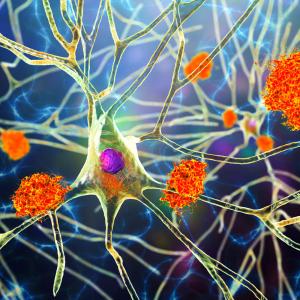Novel Method Enables More Means to Study Protein Changes Found in Alzheimer’s Disease
Using 10-year-old archival brain tissue from patients with Alzheimer’s disease, a research team from NYU Langone Medical Center has developed a novel method to examine the structure and function of proteins at the cell level—providing greater means to study protein changes found in Alzheimer’s disease.
Specifically, the researchers were able to extract more than 400 proteins from neurons that came from the brain’s temporal cortex, far more than have been extracted previously. The study is to be published online October 21 in the journal Scientific Reports (Nature).
“This new technique allows for more precise examination of formalin-preserved tissue from hundreds of brain banks around the world, and holds particular value in studying the pathogenesis of Alzheimer’s disease and other neurodegenertative diseases,” particularly for examining, says the study’s senior investigator, Thomas Wisniewski, MD, director of the NYU Langone Center for Cognitive Neurology, the Lulu P. and David J. Levidow Professor of Neurology, and professor of pathology and psychiatry at NYU School of Medicine. “Previously these types of studies required frozen tissue.”
The study used tissue saturated in wax and cut for analysis, referred to as formalin-fixed paraffin-embedded (FFPE) tissue. Pathology laboratories in hospitals routinely collect this kind of tissue, and it is available inexpensively and abundantly.
Cell-Specific Proteomics
The researchers used a technique known as laser-capture microdissection to count hundreds of proteins in a specific group of neurons isolated from the tissue in areas as small as single cells. The protein content was left undisturbed.
Until now, the FFPE technique made it hard to study proteins at the cell level. Researchers also worried about degradation of proteins in working with the tissue. However, recognizing that insoluble groups of proteins are a hallmark of Alzheimer’s disease and other neurodegenerative diseases, the team collected additional samples of neurons from cells, using formic acid to make the tissue soluble.
“Formalin-fixed paraffin-embedded tissue is plentiful,” says Dr. Wisniewski. “We think that the technique is relatively simple and reproducible and offers a highly sensitive method to detect proteins. It will offer researchers an important new tool for examining proteins using very small amounts of archived tissue.”
Coauthors Eleanor S. Drummond, PhD; Shruti Nayak, MS; and Beatrix Ueberheide, PhD; are all at NYU Langone Medical Center, New York, NY. The study was supported with funding from National Institutes of Health grants AG08051 and AG20245. Additional support came from the Seix Dow Foundation.

